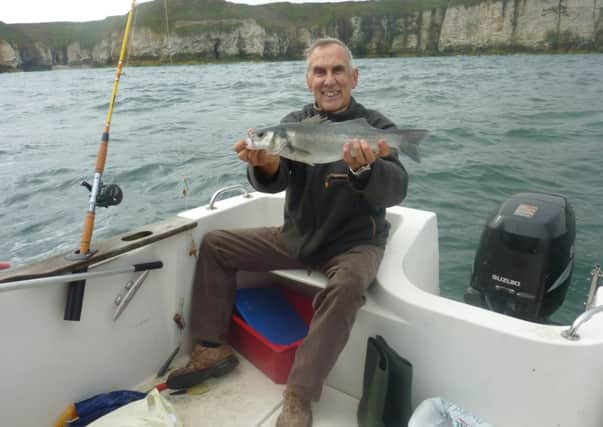Cooking up a storm with a fresh catch


When a few days of ‘slight seas’ were forecast I began to plan for mackerel, cod and bass fishing. Armed with shrimp-like feathers for the mackerel, shad and perks for the cod and surface lures for the bass, we launched and set off for Flamborough Head. My usual first mate, Kevin, was injured so the previous owner of my boat, Shaun and his son, Cameron, filled the gap.
Bridlington bay was nearly flat and Lisa Gallagher, the weather forecaster, had promised three to four before midday falling to two to three on the Beaufort wind force scale in the afternoon. Lisa is normally a sound forecaster but as we approach the Head ominous white horses were rearing their ugly heads. From nowhere, a 4ft swell arrived from the North East. It was quickly turning into a wind force of five to six.
Advertisement
Hide AdAdvertisement
Hide AdUndeterred we stopped a little short of the Head and fished in several areas for mackerel. From Danes Dike to the Head there was not a mackerel to be seen. We even followed the diving gulls with our bright pink shrimp like feathers all to no avail.
Over the last few years large shoals of mackerel have stayed in and around Bridlington bay but this year they were conspicuous by their absence. Could it be the large excavation work in the bay? More likely I suspect it’s the overfishing between Scotland and Iceland with large boats taking over 1,000 tons per outing.
Mackerel inhabit the pelagic zone of the sea - neither on the bottom nor near the shore. Pelagic trawling can account for nearly 600,000 tons of mackerel per year just from the North Sea and the North Atlantic. Iceland and the Faroe Islands awarded themselves highly increased quotas in 2010 totalling 280,000 tons and the so-called ‘Mackerel Wars’ began. To this day quotas are still being decided.
Back to my fishing and we targeted sea bass next. We pulled some surface plugs which dive and surface about 50 yards behind the boat at average speeds of 2mph. Only using two rods at a time to prevent tangles, we were fishless. Plan C was to bait fish and I found a nice kelp field in about 15ft of water hoping the cod and bass would be feeding on the small bait fish that like the kelp shelter.
Advertisement
Hide AdAdvertisement
Hide AdMy squid and sand eel cocktail proved irresistible and I immediately had a bite. After five minutes of heart-stopping dives into the kelp I brought the tired fish towards the boat and my waiting landing net. It’s quite a struggle to know how much line to wind in with the rod in my right hand and the landing net in my left. I got it wrong and the fish was off again as it saw the net. A bright flash of silver and back to the kelp. I brought it back again and this time wound in more line. A fine 4lb sea bass was netted and as we know from the cooking programmes, rod caught bass is best.
We carried on fishing and the conditions improved as the afternoon progressed. Shaun and Cameron both caught some nice cod and apart from the unpleasant sea conditions we decided it was a good days’ fishing.
I couldn’t wait to cook the bass and after keeping it in the fridge overnight, I added butter and rapeseed oil to a frying pan and the bass with sprigs of parsley, rosemary and a small chopped onion as stuffing, with salt and pepper to taste for this delicately flavoured fish.
I gave it 30 minutes on a low heat in the covered pan. Pouring the cooking juices into a white sauce - a nice accompanying ‘jus’ was the crowning glory. Bon appétit.